The Mighty Tales of the Norse Gods: Exploring the Legends of Ophiuchus
Step into a world where gods control the elements, giants roam the Earth, and the fate of the universe hangs in the balance. Welcome to the captivating realm of Norse mythology, a rich tapestry of stories that has captivated generations. In this article, we will delve deep into the mesmerizing tales of the Norse gods and goddesses, uncovering the secrets of their creation, their epic battles, and the ultimate doom that awaits them. Prepare to be enchanted as we unravel the mysteries of Asgard, Midgard, and the nine realms, and discover how these ancient tales continue to leave their mark on our culture today.
Contents
- The Creation of the Norse Universe
- Main Norse Gods and Goddesses
- Additional Norse Deities
- Norse Mythology: The Nine Realms
- The Marvelous Tales of Asgard
- The Ragnarok: The Doom of the Gods
- The Influence of Norse Mythology Today
- Conclusion
-
Frequently Asked Questions
- 1. What is the significance of Ginnungagap in Norse mythology?
- 2. Who is Ymir and how does he play a role in the creation of the Norse universe?
- 3. What are the Æsir gods and how do they fit into the creation of the Norse universe?
- 4. How did Midgard, the realm of humans, come into existence?
- 5. What did the gods create from the remains of Ymir?
- 6. What is the purpose of the wall built by the gods around Midgard?
- 7. How did the sun, moon, and stars come into existence in Norse mythology?
- 8. What is the role of Búri in Norse mythology?
- 9. Who are the Jotnar or Frost Giants?
- 10. What is the heavenly dome created by the dwarves in Norse mythology?
- References
-
Frequently Asked Questions
- What is the significance of Norse mythology in relation to astrology?
- Who is Ophiuchus and what is their role in Norse mythology?
- Are the stories of the Norse gods and goddesses based on real historical figures?
- What is the significance of the Nine Realms in Norse mythology?
- How does the influence of Norse mythology still affect modern society?
- Is Loki truly a villain in Norse mythology?
- What is Ragnarok and its significance in Norse mythology?
- What is the story behind the creation of Mjolnir in Norse mythology?
- Who is Frigg, and what role does she play in Norse mythology?
- What is the story behind the Binding of Fenrir in Norse mythology?
- References
- Read More
The Creation of the Norse Universe
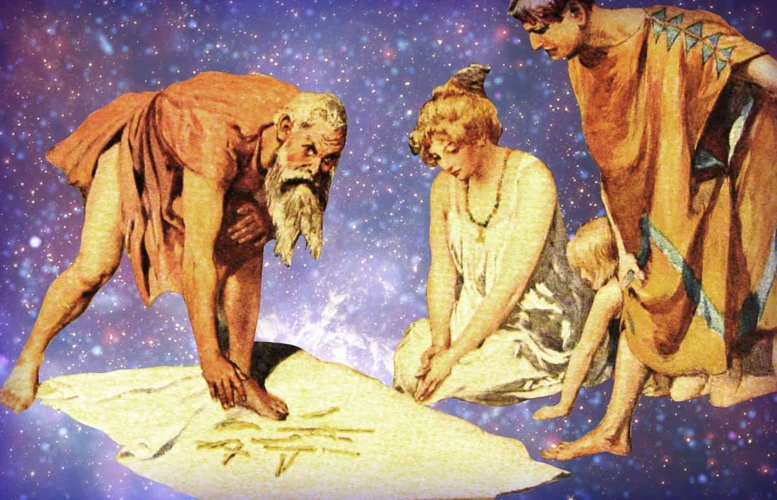
According to Norse mythology, the creation of the universe began in a vast expanse of emptiness known as Ginnungagap. This primordial void consisted of two realms: Muspelheim, a realm of fire and heat, and Niflheim, a realm of icy coldness. In the center of Ginnungagap, these two opposing forces clashed, giving birth to the first being in the cosmos, Ymir. Ymir was a giant, created from the merging of fire and ice.
As Ymir slept, the heat from Muspelheim caused him to perspire, giving rise to other giants. From Ymir’s body, the first male and female giants emerged, and they continued to multiply, eventually forming the Jotnar, or Frost Giants. Meanwhile, from the melting ice of Niflheim, a cow named Audhumla emerged. Audhumla nourished herself by licking the salty ice blocks, and as she did so, she released Búri, the first of the Æsir gods.
Búri, the first of the gods, fathered Bor, who in turn fathered Odin, Vili, and Ve. These three powerful gods eventually confronted Ymir and managed to slay him. From Ymir’s body, they created the world as we know it. Ymir’s flesh became the earth, his blood became the seas and rivers, his bones became the mountains, and his skull became the sky. Four dwarves supported Ymir’s skull, creating the heavenly dome that we see above us.
Odin, Vili, and Ve then crafted Midgard, the realm of humans, from Ymir’s eyebrows. This realm was surrounded and protected by a great wall built by the gods to safeguard humanity from the giants. They also created the sun, moon, and stars to adorn the sky, bringing light and a sense of order to the cosmos.
Ultimately, the creation of the Norse universe was a result of the interaction between the primordial forces of fire and ice, culminating in the emergence of gods, giants, and humans. This intricate web of creation and divine craftsmanship set the stage for the epic tales and adventures that would unfold in the realms of Norse mythology. To learn how Ophiuchus, the serpent-bearer, fits into the constellation mythologies, check out the fascinating article on Ophiuchus and the Zodiac: Ancient Wisdom and Modern Astrology.
Main Norse Gods and Goddesses
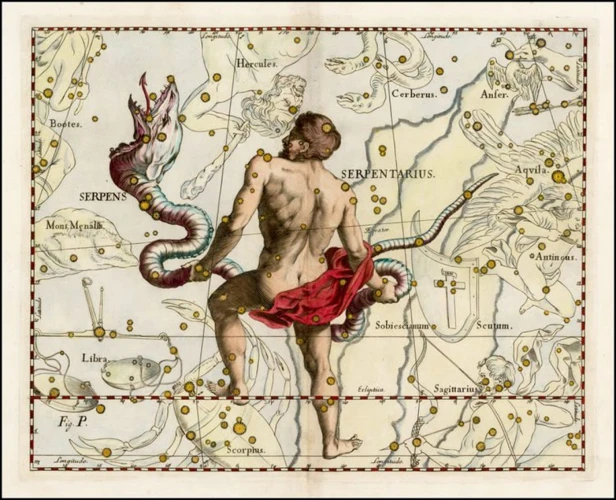
The Norse pantheon is teeming with powerful gods and goddesses, each with their unique traits and responsibilities. At the center of it all stands Odin, the Allfather and ruler of Asgard. Odin is known for his wisdom, knowledge, and sacrifice, having traded one of his eyes for a sip from the Well of Wisdom. Thor, the God of Thunder and son of Odin, wields the mighty hammer Mjolnir and is revered for his strength and protection of both gods and humans. Another prominent figure is Loki, the Trickster, who possesses shapeshifting abilities and is known for his cunning, mischief, and unpredictable nature. Among the goddesses, we have Frigg, the Queen of the Aesir and wife of Odin, associated with motherhood, marriage, and domestic affairs. Freya, the Goddess of Love and War, is renowned for her beauty, fertility, and connection to battle. Lastly, Baldur, the God of Light and Beauty, shines with his radiant presence and is beloved by all for his charm and purity. These main Norse gods and goddesses form the foundation of the pantheon, and their tales continue to fascinate and inspire us today. To understand the connection between Ophiuchus and Greek mythology, delve into the intriguing article on Ophiuchus in Greek Mythology: A Tale of Healing and Wisdom.
Odin: The Allfather
Odin, known as the Allfather, is one of the most prominent and revered gods in Norse mythology. He presided over the realm of Asgard and held dominion over war, wisdom, poetry, and magic. As the ruler of the Aesir gods, Odin was often depicted as a wise and powerful figure, with his trademark attire consisting of a wide-brimmed hat and a cloak.
Odin’s thirst for knowledge was insatiable, and he was willing to go to great lengths to acquire wisdom. He had two loyal ravens, Huginn and Muninn, who would travel the world and bring back valuable information to him. This association with ravens symbolized Odin’s deep connection with the realm of thought and intelligence.
One of Odin’s most notable traits was his role as the god of war. He was a skilled warrior and a charismatic leader who led the Aesir gods into battle against their enemies, primarily the giants. In battle, Odin wielded the mighty spear Gungnir, which was crafted by the dwarves and possessed magical properties.
Odin’s quest for knowledge and wisdom led him to make a great sacrifice. He hung himself from the world tree, Yggdrasil, for nine days and nights, pierced by his own spear. This self-imposed ordeal granted him immense knowledge of the runes, which were ancient symbols associated with magical powers and divination. Thus, Odin became the master of the runes and a source of wisdom and guidance for his fellow gods and mortals.
In addition to his prowess in warfare and wisdom, Odin was also a patron of poets and musicians. He inspired poets with his gifts of inspiration and played a crucial role in the development of Norse poetry. Odin’s association with poetry and music showcased his diverse and multifaceted nature.
The mythology surrounding Odin is rich and complex, making him a captivating figure in Norse mythology. His exploits, wisdom, and enigmatic nature continue to inspire fascination and awe. To learn more about the influence of mythological creatures like the double-headed eagle in Roman and Byzantine culture, check out our article on the role of the double-headed eagle.
Thor: God of Thunder

|
In Norse mythology, Thor is one of the most prominent and beloved gods. Known as the God of Thunder, Thor wields the mighty Mjolnir, his enchanted hammer that grants him immense power. Believed to be the son of Odin, the Allfather, and the earth goddess Fjorgyn, Thor is depicted as a strong, red-bearded warrior with a fierce and courageous spirit.
From his realm, known as Thrudheim, Thor presides over thunderstorms, bringing rain and fertility to the land. His hammer, Mjolnir, is not only a symbol of his power and protection but also a powerful weapon that allows him to control the weather, strike thunderbolts, and combat his enemies. Thor is revered as the protector of both gods and humans, defending them against the forces of chaos and evil. As a fearless warrior, Thor often engages in epic battles against monstrous creatures and giants. He has faced numerous foes, including the Jormungandr, a giant serpent, and the fierce Frost Giants of Jotunheim. Yet, through his unparalleled strength and bravery, Thor always emerges victorious, ensuring the safety and prosperity of the Nine Realms. Thor’s popularity extends beyond Norse mythology, with his character featured prominently in modern-day media, particularly in the Marvel Cinematic Universe. The Marvel version of Thor retains his strength, thunderous abilities, and iconic hammer, captivating audiences worldwide with his heroic and larger-than-life persona. Whether seen as a legendary deity or through modern adaptations, Thor continues to inspire and captivate with his thunderous might and unwavering dedication to protect and uphold the forces of good. His tales serve as a reminder of the power of courage, strength, and the indomitable human spirit. |
Loki: The Trickster
Loki, often referred to as the Trickster, is one of the most fascinating and complex figures in Norse mythology. He is a shape-shifting deity, known for his cunning nature, unpredictability, and mischievous behavior. Loki is both friend and foe to the gods, with his actions often leading to both hilarious and disastrous consequences.
Born as a Jotun, a member of the Frost Giants, Loki becomes a part of the Aesir gods through a complicated series of events. His mischievous nature is evident from an early age, as he revels in causing trouble and playing pranks on others. Loki possesses the ability to change his shape, often assuming different forms to deceive or manipulate others to his advantage.
One of Loki’s most infamous acts is his role in the death of Baldur, the god of light and beauty. Loki discovers that Baldur is immune to all harm except mistletoe, and he cunningly fashions a spear tipped with mistletoe. He then tricks Baldur’s blind brother, Hodr, into throwing the spear, which ultimately leads to Baldur’s demise. This act not only brings immense grief to the gods but also marks a turning point in Loki’s relationship with them, as they view him with suspicion and anger.
Loki’s cunning and trickery also come to the forefront in numerous tales, such as the time he challenges Thor to a flyting contest, a battle of insults. Despite his smaller size and Thor’s legendary strength, Loki manages to outwit Thor with his quick wit and clever wordplay. These stories demonstrate Loki’s ability to navigate dangerous situations using his intelligence rather than brute force.
However, Loki’s mischief often leads to dire consequences. For instance, he is responsible for engineering the death of the beloved god Baldur, which sets in motion a chain of events that ultimately leads to the prophesied Ragnarok, the cataclysmic battle that results in the destruction of the gods and the world itself.
While Loki’s actions may be deceitful and self-serving, he also possesses a complex and multifaceted personality. At times, he shows loyalty and aids the gods with his cunning and shape-shifting abilities. He assists them in their greatest challenges, earning their begrudging respect. Yet, Loki remains an enigmatic figure, holding a place of neither pure good nor pure evil.
In Norse mythology, Loki’s character encompasses the unpredictability and paradoxes of life itself. He serves as a reminder that even among the gods, not everything is black and white. Loki is a testament to the complexities of human nature and the eternal struggle between chaos and order. His tales continue to captivate and intrigue, making him an unforgettable figure in Norse mythology.
Additional Norse Deities
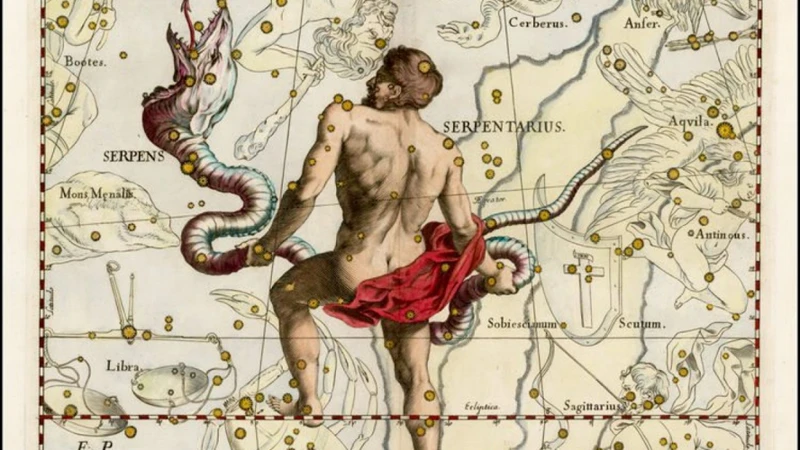
In addition to the main Norse gods and goddesses, there are numerous other deities that play significant roles in the rich tapestry of Norse mythology. One such deity is Frigg, the queen of the Aesir and the wife of Odin. Frigg is associated with love, marriage, and motherhood, and is known for her wisdom and foresight. Another powerful goddess is Freya, the goddess of love, beauty, and war. Freya is renowned for her beauty and her enchanting powers, as well as her skills in battle. Lastly, there is Baldur, the god of light and beauty. Baldur is beloved by all, known for his pure heart and radiant appearance. However, his tragic demise is one of the most poignant stories in Norse mythology. These additional deities bring depth and complexity to the pantheon of Norse gods, each contributing their unique qualities and stories to the intricate web of ancient Norse mythology.
Frigg: Queen of the Aesir
Frigg, the majestic Queen of the Aesir, is one of the most revered goddesses in Norse mythology. Known for her wisdom, beauty, and nurturing nature, she holds a significant place in the pantheon of gods. Frigg is the wife of Odin, the Allfather, and together they rule over the realm of Asgard.
As the mother of Baldr, the god of light and beauty, Frigg exudes maternal love and protection. She is depicted as a caring and devoted mother, doing everything in her power to shield her son from harm. Frigg’s love for Baldr is so profound that she seeks oaths from every being and object in the world not to harm him, except for the seemingly harmless mistletoe. This fatal oversight leads to Baldr’s tragic death and sets in motion the events of Ragnarok, the twilight of the gods.
Frigg is also associated with wisdom and foresight. She possesses the gift of prophecy and has the ability to perceive the future, often utilizing her knowledge to guide Odin and the other gods. Her wisdom is highly regarded, and she is sought after for counsel and guidance in matters of great importance.
Interestingly, Frigg is closely associated with the concept of fate and has a role in shaping destiny. She weaves the clouds, which are said to represent the intricate tapestry of fate. Frigg’s craftsmanship in manipulating these threads of fate ultimately affects the course of events in the cosmos.
In addition to her motherly and wise attributes, Frigg is also known for her skills in the art of magic. She possesses formidable powers, which she uses to protect her loved ones and aid the gods in their endeavors. Frigg’s magical abilities make her a compelling and influential figure in the Norse pantheon.
Frigg, the Queen of the Aesir, holds a significant place in Norse mythology. Her nurturing nature, wisdom, and magical skills make her a respected and powerful goddess. The story of Frigg showcases her integral role in the divine family and her impact on the events that unfold within the realms of Norse mythology.
Freya: Goddess of Love and War
Freya: Goddess of Love and War
In Norse mythology, Freya is a prominent goddess associated with both love and war. She is recognized as one of the most powerful and influential deities in the pantheon. Freya, also known as Freyja, is a member of the Vanir, a group of gods associated with fertility, prosperity, and nature.
As the goddess of love, Freya possesses unparalleled beauty and charm. She is a representation of sensuality, desire, and romantic love. Freya has the ability to evoke profound feelings of love and lust in both gods and mortals alike. It is said that her tears turn into gold, symbolizing her association with material wealth and abundance.
However, Freya is not solely confined to matters of love and desire. She is also a fierce warrior goddess, known for her bravery, martial skill, and connection to the battlefield. Freya leads the Valkyries, divine maidens who choose valiant warriors to enter the great hall of Valhalla after death. She herself is a formidable warrior, wearing a cloak of falcon feathers that allows her to shape-shift into a falcon, granting her incredible speed and agility.
Freya wields a legendary necklace called Brísingamen, said to have been forged by four dwarves. This necklace is a symbol of her power and authority and is often associated with fertility and abundance. It is through her connections to love and war that Freya embodies the dualities and complexities of human existence.
It is worth mentioning that Freya’s character has similarities to the Greek goddess Aphrodite, who is also associated with love and beauty. Both goddesses inspire desire and are invoked in matters of passion and romance. However, Freya’s inclusion in Norse mythology adds depth and richness to the pantheon, showcasing the diverse facets of love and war in the Norse worldview.
The captivating tales of Freya’s love affairs, her battles, and her role as a mediator between gods and mortals continue to fascinate and inspire people today. The multifaceted nature of Freya’s character reminds us of the intricacies and complexities of human emotions and the power they hold over us. Freya remains a beloved and celebrated figure in Norse mythology, embodying the eternal dance between love and war.
Baldur: God of Light and Beauty
Baldur, known as the God of Light and Beauty, is one of the prominent figures in Norse mythology. As the son of Odin and Frigg, he personified purity, innocence, and all that was good in the world. Revered for his radiant appearance and gentle nature, Baldur was beloved by both gods and mortals alike.
Legend has it that Baldur’s beauty was so awe-inspiring that even flowers would bloom in his presence, and the sun would shine brighter when he walked. He was often depicted as a fair, shining figure with golden hair and a warm smile that could brighten the darkest of days.
Baldur’s role in Norse mythology is primarily associated with his tragic fate, which was foretold by a prophetic dream. Frigg, his mother, fearing for his safety, went to great lengths to protect him. She made every object in existence swear an oath to never harm Baldur, believing that her son was invincible.
However, Loki, the mischievous trickster, discovered that Frigg had overlooked mistletoe. Seizing this opportunity, Loki fashioned a spear from mistletoe and tricked Baldur’s blind brother, Hodr, into throwing it at him. The mistletoe pierced Baldur’s heart, killing him instantly.
The death of Baldur plunged the entire cosmos into mourning. His absence cast a shadow over the gods and brought darkness and sorrow to the realms. To honor and mourn Baldur’s passing, a funeral pyre was prepared, and his wife, Nanna, joined him in the afterlife, dying from a broken heart.
Baldur’s death kickstarted a quest to rescue him from the clutches of Hel, the queen of the underworld. Hermod, Baldur’s brother, traveled to the realm of the dead to negotiate for Baldur’s return. Although unsuccessful, Baldur’s sacrifice became a symbol of the cycle of life and death in Norse mythology.
Baldur’s story serves as a reminder of the fleeting nature of beauty and the inevitability of mortality. His tale encapsulates the themes of tragedy, sacrifice, and the fragility of life, reinforcing the intricate nature of Norse mythology and its exploration of fundamental and existential questions.
Baldur’s legacy continues to leave a lasting impact, inspiring artists, writers, and modern interpretations of Norse mythology. His story serves as a reminder to appreciate the beauty around us and cherish the moments of light that brighten our lives. As we reflect on the tale of Baldur, we are reminded of the delicate balance between light and darkness, and the eternal quest for beauty and meaning in our own lives.
Norse Mythology: The Nine Realms
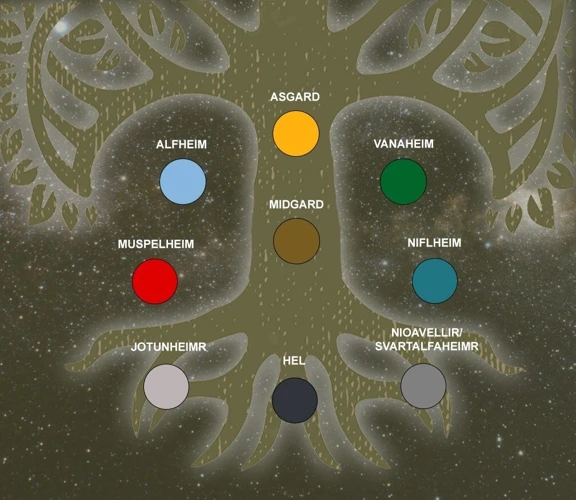
In Norse mythology, the universe is divided into nine realms, each with its distinct characteristics and inhabitants. These realms are interconnected by the branches of Yggdrasil, the mystical World Tree that holds the cosmos together. Let’s take a closer look at each of these realms.
Asgard: Asgard is the home of the powerful Aesir gods led by Odin, the Allfather. It is a realm of majestic palaces and grand halls, where divine beings reside. Asgard is known for its elaborate feasts and abundant celebrations. This realm is also home to Valhalla, the great hall where fallen warriors go to feast and prepare for Ragnarok, the cataclysmic battle at the end of the world.
Midgard: Midgard is the realm of humans and is situated in the middle of the cosmos, surrounded by a protective wall built by the gods. It is a world filled with vast landscapes, forests, rivers, and mountains. Midgard is believed to be a reflection of the mortal realm, where humans live out their lives, facing various challenges and adventures.
Alfheim: Alfheim is the realm of the light elves. It is a luminous and ethereal realm, filled with radiant beauty and enchanting landscapes. The light elves are renowned for their grace, wisdom, and the extraordinary light they emit. This realm is said to be connected closely to the realm of the gods, as the elves are seen as intermediaries between gods and humans.
Jotunheim: Jotunheim is the realm inhabited by the fearsome Frost Giants, also known as Jotnar. It is a harsh and unforgiving land of icy mountains and freezing winds. The giants in Jotunheim often clash with the gods of Asgard, and their interactions frequently lead to epic battles and conflicts.
Vanaheim: Vanaheim is the realm of the Vanir gods, a group of deities associated with fertility, nature, and prosperity. It is a lush and fertile land, abundant with flora and wildlife. Vanaheim is known for its vibrant forests, flowing rivers, and bountiful harvests. The Vanir gods are often associated with peace and diplomacy.
Svartalfheim: Svartalfheim, also known as Nidavellir, is the realm of the dwarves. It is located underground, beneath the surface of the Earth. This realm is believed to be a vast network of intricate caves and mines where the dwarves excel in craftsmanship and mining. The dwarves are known for creating powerful weapons and artifacts for the gods and legendary heroes.
Niflheim: Niflheim is a realm of eternal ice and mist. It is a desolate and icy land, inhabited by fierce beings and spirits. It is said that the primordial giant Ymir was born in Niflheim. This realm is alternatively home to Hel, the goddess of the dead, who rules over the realm of the same name.
Muspelheim: Muspelheim is the realm of fire and heat, ruled by the fire giant Surtr. It is a realm of constant flames and volcanic landscapes. Muspelheim is located to the south of Ginnungagap, the primordial void. It is believed that Muspelheim will play a major role in the apocalyptic battle of Ragnarok.
Helheim: Helheim is the realm of the dead, ruled by the goddess Hel. It is a somber and gloomy realm where those who died of natural causes or illness reside. Helheim is described as dark and cold, with mist-covered landscapes. It serves as the final resting place for those who did not die honorably in battle.
These nine realms offer a diverse range of landscapes, inhabitants, and mythical narratives that intertwine to create the intricate tapestry of Norse mythology. Exploring these realms allows us to gain a deeper understanding of the cosmology and beliefs of the ancient Norse people.
The Marvelous Tales of Asgard
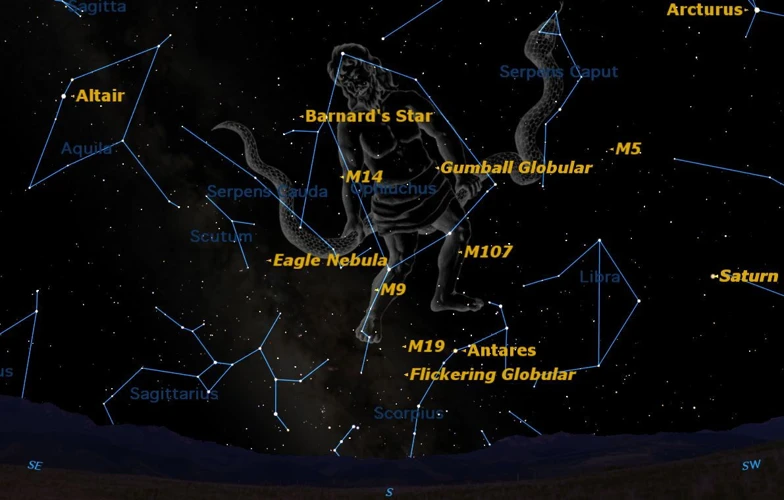
In the marvelous tales of Asgard, the realm of the Norse gods, there are countless stories that captivate the imagination. One such tale is the creation of Mjolnir, the mighty hammer wielded by Thor, the god of thunder. According to the legend, the dwarves—master craftsmen—forged this incredible weapon. The hammer’s power and ability to control lightning made it an indispensable tool in Thor’s battles against giants and other enemies. Another captivating tale is the theft of Thor’s hammer. In this story, the mischievous Loki, the trickster god, plays a central role. The giant Thrym steals Mjolnir, demanding Freya, the goddess of love and war, as his bride in exchange for its return. Thor disguises himself as Freya and, with Loki’s help, retrieves his hammer, unleashing his fury and vanquishing Thrym and his kin. Lastly, the binding of Fenrir, a monstrous wolf and child of Loki, is a gripping tale. The gods, fearful of Fenrir’s might, attempt to bind him multiple times but fail until the clever Tyr volunteers to sacrifice his own hand in order to secure Fenrir’s restraints. These marvelous tales of Asgard, filled with heroic feats, intrigue, and divine power, continue to fascinate and inspire to this day.
The Creation of Mjolnir
In Norse mythology, the creation of Mjolnir, the mighty hammer of Thor, is a fascinating tale that showcases the remarkable skill and craftsmanship of the gods. The story begins with an unforeseen event that threatens the safety of the gods and the realm of Asgard. Loki, the mischievous trickster, somehow manages to cause the hair of Sif, Thor’s wife, to be stolen.
Enraged by this act, Thor seeks the assistance of the renowned dwarven blacksmiths, known as the Sons of Ivaldi, to craft a new set of golden hair for Sif. The Sons of Ivaldi, renowned for their exceptional craftsmanship, skillfully create the golden wig, which not only restores Sif’s beauty but also enhances her divine qualities.
Impressed by their work, Loki goads the dwarves into creating more magnificent gifts for the gods. The Sons of Ivaldi then set to work on creating three other remarkable objects: Gungnir, the spear of Odin, a strong and unerring weapon; and Draupnir, a magically self-replicating golden ring belonging to Odin.
However, Loki is determined to outshine the Sons of Ivaldi’s creations and challenges the dwarves to craft an even more extraordinary item. To fulfill Loki’s demand, the dwarf brothers Brokkr and Sindri forge Mjolnir, the mighty hammer of Thor. This remarkable weapon possesses immense power, capable of striking lightning and thunder, and is enchanted with a unique property – it always returns to Thor’s hand whenever thrown.
As Brokkr and Sindri work on creating Mjolnir, Loki, assuming the form of a mischievous fly, bites Brokkr, disrupting his concentration during the forging process. Despite this interference, the brothers manage to complete the hammer, and upon its creation, the entire cosmos trembles in acknowledgment of its power.
With Mjolnir in his possession, Thor becomes an even more formidable force, wielding the hammer to protect Asgard, battle fierce opponents, and uphold justice throughout the realms. The creation of Mjolnir exemplifies the incredible skill of the dwarven blacksmiths and underlines the significance of Thor as the mighty god of thunder.
The tale of the creation of Mjolnir not only symbolizes the power and strength of Thor but also highlights the importance of skilled craftsmanship in Norse mythology. It serves as a testament to the profound connection between gods and mortals, showcasing how their destinies intertwine in the creation of extraordinary artifacts.
To learn more about the legendary creatures and tales associated with Norse mythology, don’t miss the enthralling article on Ophiuchus in Greek Mythology: A Tale of Healing and Wisdom that sheds light on the captivating myths surrounding the constellation.
The Theft of Thor’s Hammer
In one of the most thrilling tales of Norse mythology, the mighty Thor finds himself facing a formidable challenge when his prized possession, the legendary hammer Mjolnir, is stolen. The story begins with Thor awakening to find his hammer missing, leaving him enraged and determined to retrieve it at all costs. Desperate for answers, he consults the cunning and mischievous Loki, known for his ability to navigate the treacherous realms.
Loki, using his shape-shifting abilities, transforms into a falcon and soars through the skies in search of the thief. As he journeys far and wide, Loki eventually discovers that the hammer has fallen into the hands of Thrym, the king of the Frost Giants. Thrym, desiring to possess the immense power of Mjolnir, declares that he will only return it to Thor if he is given the hand of the beautiful Freya, goddess of love and war, in marriage.
Thor, furious at this audacious demand, sets out with Loki to devise a plan to retrieve his beloved hammer. Together, they hatch a scheme. Thor disguises himself as Freya, while Loki transforms into a handmaiden. They travel to the frosty land of the giants, and upon their arrival, Thrym is overjoyed at the thought of marrying Freya.
During the wedding feast, Thrym suspects that something may be amiss when “Freya” devours an entire boar and drinks copious amounts of mead, but Loki quickly explains it away by claiming the goddess hadn’t eaten for days due to her overwhelming excitement. As the moment arrives for Mjolnir to be presented to the bride, Thor reveals his true identity and unleashes his fury upon the unsuspecting giants.
Taking hold of Mjolnir once again, Thor wields its devastating power with unmatched strength, incapacitating Thrym and his cohorts. With his hammer restored to its rightful place, Thor triumphantly returns to Asgard, bringing an end to the audacious theft and reaffirming the resilience of the gods in their continuous battle against the forces of chaos.
The theft of Thor’s hammer showcases the resourcefulness and determination of the Norse gods, highlighting the lengths they are willing to go to protect their prized possessions and maintain order in the universe. This thrilling tale serves as a testament to the indomitable spirit of Thor and his unwavering commitment to justice. To explore more about the enchanting world of mythology, read the article on Ophiuchus in Greek Mythology: A Tale of Healing and Wisdom.
The Binding of Fenrir
In Norse mythology, the Binding of Fenrir is a gripping tale of deception, strength, and the imminent downfall of the gods. Fenrir, a mighty wolf and offspring of the trickster god Loki, was known for his immense size and power. As Fenrir grew larger and more uncontrollable, the gods became fearful of his potential to wreak havoc on the world during Ragnarok, the cataclysmic event that would bring about the end of the gods.
To prevent this, the gods devised a plan to bind Fenrir. They asked the dwarves to create a magical, unbreakable chain called Gleipnir. However, Fenrir was suspicious of their intentions and refused to be bound unless one of the gods placed their hand in his mouth as a gesture of trust. Only Tyr, the god of war and justice, was willing to do so.
With Gleipnir in hand, the gods approached Fenrir and proposed a challenge – they would attempt to bind him using the unbreakable chain, confident that it would be impossible for him to break free. Fenrir, sensing treachery, agreed to be bound but only if one of the gods would place their hand in his mouth as a show of good faith.
Tyr, knowing the risk, stepped forward and placed his hand in Fenrir’s mouth. As the gods bound Fenrir with Gleipnir, he realized the true nature of their intentions. Realizing he had been tricked, Fenrir reacted with fury and attempted to free himself, but the chain held fast due to its magical properties.
In his rage, Fenrir bit down on Tyr’s hand, severing it from his arm. The sacrifice made by Tyr to bind Fenrir showcased his unwavering bravery and commitment to protecting the realms. From that day forward, Tyr became known as the one-handed god.
The Binding of Fenrir serves as a pivotal moment in Norse mythology, as it solidifies the inevitability of Ragnarok, the final battle where Fenrir will break free and wreak havoc upon the gods. This tale highlights the complex dynamics between the gods and the creatures of Norse mythology, as well as the sacrifices they were willing to make to preserve the balance of power. The Binding of Fenrir is just one example of the enthralling and captivating stories that comprise the Norse mythological canon.
The Ragnarok: The Doom of the Gods
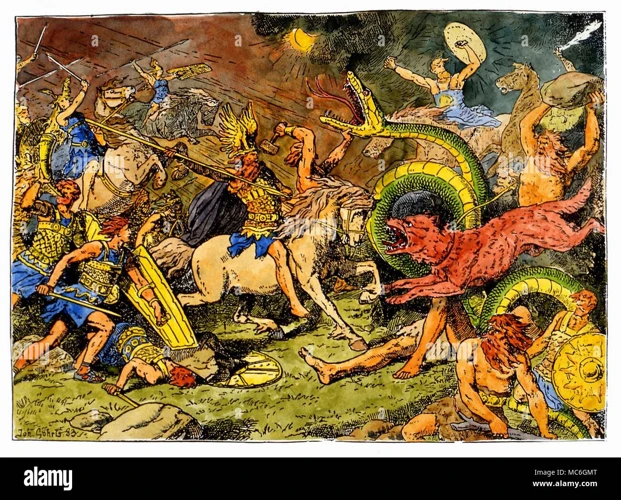
In Norse mythology, the Ragnarok is a cataclysmic event that marks the end of the gods and the destruction of the universe. It is an epic battle between the forces of good and evil, with catastrophic consequences for both the divine and mortal realms.
The Ragnarok begins with a series of ominous signs and events, foretelling the upcoming doom. The winter that never ends descends upon the world, and chaos ensues. The monstrous wolf Fenrir breaks free from his chains, the great serpent Jormungandr rises from the depths of the sea, and the ship Naglfar, made of dead men’s nails, sets sail towards the final battleground. These portents signal the arrival of the battle that will bring about the end of all things.
The gods know that the Ragnarok is inevitable and that the fates can’t be avoided. Odin, the Allfather, gathers the Aesir gods and warriors in preparation for the final conflict. The primary antagonists are Loki and his monstrous offspring, including the wolf Fenrir, Jormungandr, and the fire giant Surtr. The battle is fierce and brutal, with beloved gods falling one by one.
During the Ragnarok, Thor, the mighty god of thunder, slays the serpent Jormungandr, but succumbs to its venom and takes only nine steps before collapsing. Odin confronts Fenrir but is devoured by the colossal wolf. Loki battles Heimdall, the guardian of the Bifrost Bridge, and both meet their ends in a mutual kill. Finally, Surtr engulfs the world in flames, consuming everything in a fiery blaze.
Once the dust settles, only a few gods and humans remain. The world is left completely devastated and the gods have perished. However, the Ragnarok also brings the promise of rebirth and renewal. From the ashes of destruction, a new world emerges, bringing forth a new generation of gods, ultimately symbolizing the cyclical nature of existence.
The Ragnarok represents the theme of inevitable fate and the cyclical nature of life and death in Norse mythology. Its vivid and dramatic portrayal captures the imagination, leaving a lasting impression on the tales of the gods and their ultimate doom. To explore further into the realm of mythology and discover other captivating stories, you may be interested in the article on Ophiuchus in Greek Mythology: A Tale of Healing and Wisdom.
The Influence of Norse Mythology Today
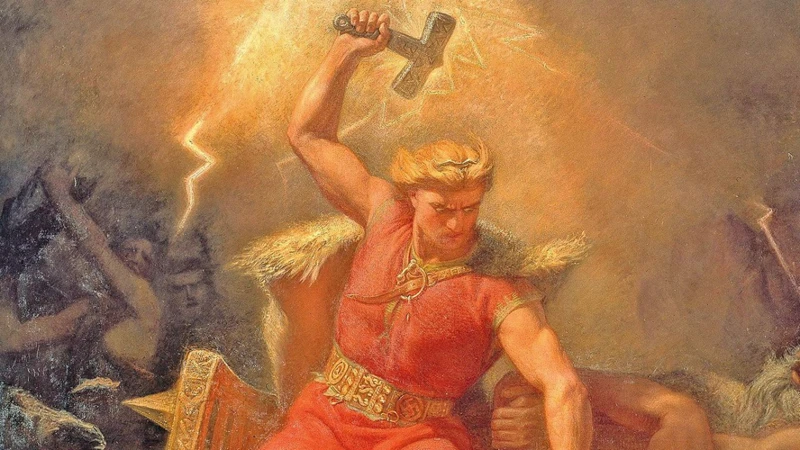
The influence of Norse mythology continues to resonate in various aspects of modern culture, ranging from literature and film to art and fashion. The epic tales of the mighty gods and goddesses, along with the rich tapestry of the Nine Realms, have found their way into contemporary storytelling and have become a source of inspiration for many creative endeavors.
One notable area where Norse mythology has made a significant impact is in the realm of literature. The works of renowned author J.R.R. Tolkien, such as “The Lord of the Rings” trilogy and “The Hobbit,” draw heavily from Norse mythology for their intricate world-building and epic narratives. Tolkien, a scholar of Norse mythology, infused his stories with Norse themes, characters, and cosmology, allowing readers to experience the grandeur and depth of the Norse universe.
In recent years, Norse mythology has also seen a resurgence in popular films and television series. Marvel Studios, in particular, has incorporated Norse gods and characters into its cinematic universe, with the introduction of Thor, Loki, Odin, and other iconic figures from Norse mythology. These films have brought the mythology to a wider audience and have sparked renewed interest in the mighty tales of the Norse gods.
Beyond the realms of storytelling, Norse mythology has left its mark on various art forms. Artists around the world have been inspired by the vivid imagery and symbolism found in Norse mythological tales, incorporating them into their paintings, sculptures, and other visual artworks. The powerful gods, awe-inspiring landscapes, and epic battles depicted in Norse mythology provide artists with a wealth of inspiration to explore and interpret.
Even in the realm of fashion and popular culture, Norse mythology has permeated the collective consciousness. Symbols such as Mjolnir, the hammer of Thor, and the Valknut, a three-interlocking-triangle symbol associated with Odin, have become popular motifs and designs in jewelry, tattoos, and clothing. These symbols not only serve as fashionable accessories but also hold deeper meanings representing strength, protection, and spiritual connections.
It’s evident that Norse mythology continues to captivate and inspire people in various forms of artistic expression. Its timeless stories and iconic characters have become embedded in our cultural fabric, ensuring that the influence of the Norse gods and their epic tales will endure for generations to come.
Conclusion
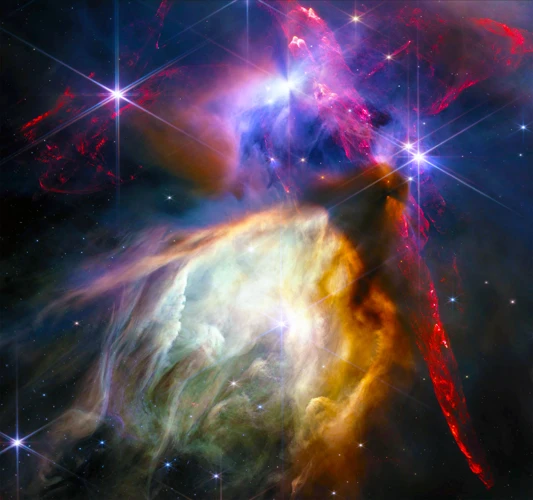
In conclusion, the Norse universe is a captivating realm filled with mighty gods, epic battles, and fantastical tales. The creation of the universe, born from the clash of fire and ice, gave rise to gods, giants, and humans, each playing a unique role in shaping the cosmos. From the legendary figures of Odin, Thor, and Loki to the enchanting realms of Asgard and Midgard, Norse mythology continues to inspire and capture our imagination today.
The profound influence of Norse mythology can be seen in literature, art, and popular culture, with countless adaptations and references to these ancient tales. The Marvel Cinematic Universe, for example, has brought Norse gods like Thor and Loki to the forefront of modern storytelling, introducing a new generation to the enduring mythology of the Norse pantheon.
Moreover, Norse mythology has left an indelible mark on our language and everyday expressions. Many words and phrases, such as “berserk,” “Valhalla,” and “ragnarok,” have become part of our lexicon, reflecting the enduring impact of these stories on our collective consciousness.
As we explore the legends of Ophiuchus and venture into the realms of gods and giants, let us appreciate the rich heritage and cultural significance of Norse mythology. These captivating tales have stood the test of time, enchanting audiences across centuries and reminding us of the enduring power of storytelling. Whether through epic battles, heroic feats, or intricate creation myths, the Norse gods continue to captivate our imagination, leaving us in awe of their might and the vastness of their universe.
So, join us in the exploration of the Norse gods and immerse yourself in the enthralling world of ancient legends. From the creation of the universe to the impending doom of Ragnarok, these tales will continue to inspire and ignite our sense of wonder for generations to come. Let the power of the Norse gods guide you in your own journey of discovery, and may the tales of Ophiuchus and the mighty Norse pantheon leave an indelible mark on your own personal mythology.
Frequently Asked Questions
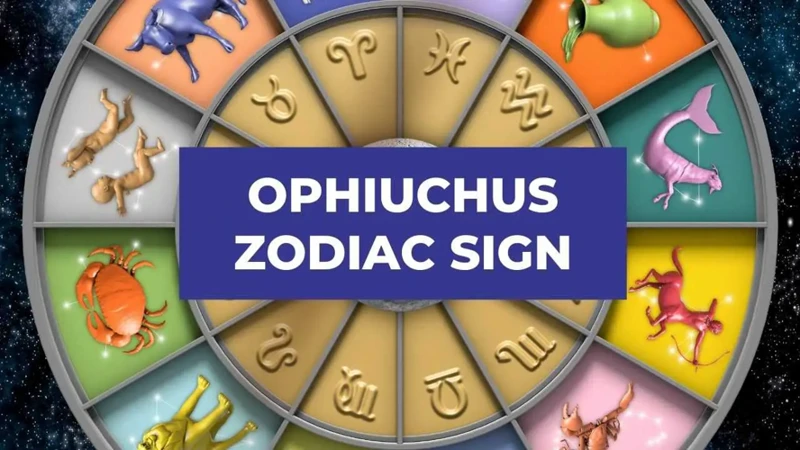
1. What is the significance of Ginnungagap in Norse mythology?
Ginnungagap is the primordial void in Norse mythology, representing the chaos and emptiness that existed before the creation of the universe. It is the place where the clash of fire and ice resulted in the birth of the first being, Ymir, and the subsequent creation of the cosmos.
2. Who is Ymir and how does he play a role in the creation of the Norse universe?
Ymir is a giant and the first being in Norse mythology. He was created from the merging of fire and ice in Ginnungagap. Ymir’s body forms the foundation of the world, with his flesh becoming the earth, his blood turning into the seas, and his bones transforming into the mountains.
3. What are the Æsir gods and how do they fit into the creation of the Norse universe?
The Æsir gods are a powerful group of deities in Norse mythology. They are the offspring of Búri, the first of the gods. Odin, Vili, and Ve, the sons of Bor and grandsons of Búri, played a pivotal role in slaying Ymir and using his body parts to create the different realms of the universe.
4. How did Midgard, the realm of humans, come into existence?
Midgard, the realm of humans, was created by Odin, Vili, and Ve from the eyebrows of Ymir. It was carefully crafted as a safe haven for humanity, surrounded by a protective wall built by the gods to shield humans from the influence of the giants.
5. What did the gods create from the remains of Ymir?
The gods used various parts of Ymir’s body to create the different elements of the world. His flesh became the earth, his blood turned into the seas and rivers, his bones transformed into mountains, and his skull became the sky. Dwarves even supported his skull to create the heavenly dome.
6. What is the purpose of the wall built by the gods around Midgard?
The wall built by the gods around Midgard serves as a protective barrier between humans and the giants. It helps to safeguard humanity and keep them separate from the chaotic and often dangerous influence of the Jotnar, the Frost Giants.
7. How did the sun, moon, and stars come into existence in Norse mythology?
The gods created the sun, moon, and stars to adorn the sky and bring light and order to the cosmos. These celestial bodies serve as important elements in Norse mythology and have their own fascinating tales and mythological significance.
8. What is the role of Búri in Norse mythology?
Búri is the first of the Æsir gods and the grandfather of Odin, Vili, and Ve. He emerged from the licking of the salty ice blocks by Audhumla, the primeval cow. Búri’s existence marks the beginning of the divine lineage and sets the stage for the subsequent events in Norse mythology.
9. Who are the Jotnar or Frost Giants?
The Jotnar, also known as the Frost Giants, are a race of giants in Norse mythology. They are descendants of Ymir and play a significant role as antagonistic forces in the tales and conflicts involving the gods, often posing threats to the stability and order of the cosmos.
10. What is the heavenly dome created by the dwarves in Norse mythology?
The heavenly dome refers to the sky or celestial sphere that covers the world. According to the Norse mythology, the dwarves supported the skull of the slain Ymir to create this dome, which encompasses the known realms and acts as a boundary between the earthly and divine realms.
References
- Tales of the Norse Gods (Oxford Myths and Legends)
- Tales of the Norse Warrior Gods: The Heroes of Asgard …
Frequently Asked Questions

What is the significance of Norse mythology in relation to astrology?
While Norse mythology does not directly correlate with astrology, there are certain connections between the two. Norse mythology is rich with tales of gods and goddesses who inhabited celestial realms and influenced the natural forces, which can be seen as a reflection of the celestial bodies in astrology.
Who is Ophiuchus and what is their role in Norse mythology?
Ophiuchus is not a figure in Norse mythology. It is actually a constellation that lies along the celestial equator, but it is not a part of the traditional Norse pantheon. Norse mythology primarily revolves around gods, goddesses, and mythological creatures, but Ophiuchus is not among them.
Are the stories of the Norse gods and goddesses based on real historical figures?
The stories of the Norse gods and goddesses are not based on real historical figures, but they have been passed down through generations as part of Norse mythology. These myths were created to explain natural phenomena, human behavior, and to provide moral teachings.
What is the significance of the Nine Realms in Norse mythology?
The Nine Realms are a central concept in Norse mythology. They are separate but interconnected worlds that exist within the Norse cosmology. Each realm is home to different gods, creatures, and landscapes, and they play a crucial role in the overall narrative of Norse mythology.
How does the influence of Norse mythology still affect modern society?
Norse mythology continues to have a significant influence on modern society. It has inspired countless works of literature, art, and even popular culture, such as the Marvel Comics’ depiction of Thor. Additionally, many aspects of Norse mythology have been incorporated into various religious and spiritual practices around the world.
Is Loki truly a villain in Norse mythology?
Loki is a complex character in Norse mythology and cannot be simply classified as a villain. While he is often portrayed as mischievous and causing trouble for the gods, he also plays a pivotal role in several important stories. Loki’s motivations and actions are multifaceted, making him one of the most intriguing figures in Norse mythology.
What is Ragnarok and its significance in Norse mythology?
Ragnarok is the prophesied cataclysmic event in Norse mythology that marks the end of the gods and the world as they know it. It signifies the ultimate battle between the forces of good and evil, leading to the destruction and rebirth of the universe. Ragnarok is significant as it represents the cyclical nature of existence and the inevitability of change.
What is the story behind the creation of Mjolnir in Norse mythology?
According to Norse mythology, Mjolnir, the mighty hammer wielded by Thor, was created by the dwarves. Loki, in his mischievous nature, had his head transformed into that of a fly and distracted the dwarves during the crafting process. As a result, Mjolnir was imbued with incredible power and became one of the most iconic symbols of Norse mythology.
Who is Frigg, and what role does she play in Norse mythology?
Frigg is the queen of the Aesir, the principal gods in Norse mythology. She is associated with motherhood, marriage, and domestic life, and is often depicted as wise and knowledgeable. Frigg is known for her ability to foresee the future, but her role extends beyond prophecy as she also serves as a protective figure and advisor to the gods.
What is the story behind the Binding of Fenrir in Norse mythology?
The Binding of Fenrir is a significant event in Norse mythology. Fenrir, a great wolf and son of Loki, proved to be a threat to the gods. To prevent him from wreaking havoc, the gods attempted to bind him. However, Fenrir proved to be too powerful and broke free, leading to dire consequences for the gods during Ragnarok.






